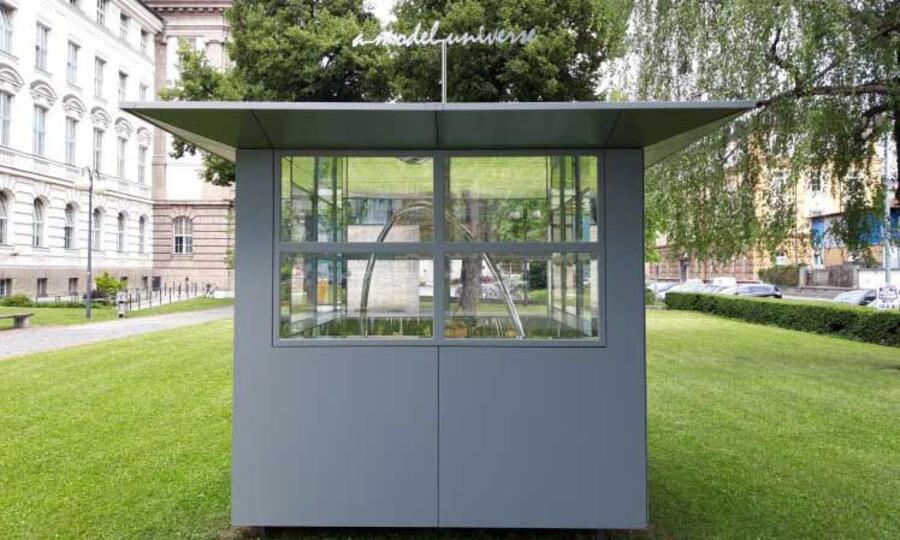Contents, theses, questions, pictures - the university with all its scientific facets as a model world.
The installation transforms scientific content into an art project - the infinitely large exterior space is reflected in the cubic exhibit in a poetic way.
The "model universe" is an exhibition pavilion, a showcase in which objects are shown in alternating rhythm that establish a relationship to the university - to science and art - by translating aspects of the scientific into artefacts; but not in the "science-to-public" format, but as autonomous, artistic works.
Every science, every faculty has its own "model universes", often even several different ones, be it the natural sciences, the humanities or the technical sciences. Common to all disciplines is that they develop models to make things visible that cannot be seen because they may be too large, too small, too scattered, too hidden, too immaterial, or in some other way not visible, tangible, or perceptible. All disciplines use modelling methods to look beyond space into time: forwards, backwards or to accelerate or decelerate time.
The way of modelling is very different and determined by disciplinary traditions, as e.g. mathematics expresses relations in formulas that are as elegant as possible, biology opens up the world of the microscopic scale or in the humanities, for example, a poem summarizes the essence of a perception or a state "condensing" to the point. "Everything is a model..." says Friederike Mayröcker in a text written especially for this university anniversary.
The first exhibit with the title "O" is a form that would not work without a mirror; another is the text by Friederike Mayröcker with the title "landart, z.B.", another is a "Vessel", a vessel sculpture.
In terms of typology, the pavilion reminds of profane, small-scale urban architecture such as a kiosk or pavilion; it is reserved to inconspicuous. If one looks inside, however, another space opens up which apparently continues into infinity.
But it is neither a black box closed off from the outside, nor an illusionary infinity room, because both the interior space and the objects as well as the green exterior space of the city are reflected in it and bring both universes together.
Idea and Implementation
Gabriele Seifert, Götz Stöckmann (formalhaut), Institute for Design (Faculty of Architecture)
Department of Structural Engineering and Material Sciences (Faculty of Engineering Sciences)
Location
Campus Innrain, Universitätshauptgebäude, Vorplatz
